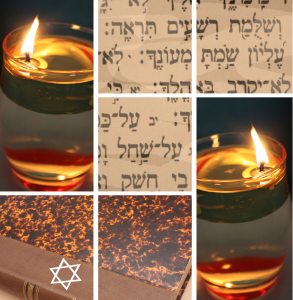Lag B’Omer” literally means the 33rd day of the “counting of the Omer.”
This day is significant on the Jewish calendar for two reasons:
- It is the day that the plague which took the lives of Rabbi Akiva’s 24,000 students came to an end. For this reason, it is a day of happiness and rejoicing. This does not, however, explain why Jews around the world mark that rejoicing by lighting bonfires (Jews usually rejoice by eating!).
- There was a second occurrence on this day. Lag B’Omer is the day that marks the passing of one of Rabbi Akiva’s greatest students, Rabbi Shimon Bar Yochai, in the 2nd century CE. Rabbi Shimon is most widely known as the author of the Zohar, the principle Kabbalistic text.
Interestingly, the day is not known as the “day of the death” of R’ Shimon, rather “the day of his joy.” This is due to the unique circumstances of his passing. On Lag B’Omer, R’ Shimon’s home was filled with students. He requested that all leave, besides his son and one student. The Zohar tells that when everyone left and the door was closed, his home became surrounded by fire, similar to the fire which burned on Mt. Sinai when the Torah was given to the Jews.
Rabbi Shimon then began to speak for hours, revealing the innermost hidden secrets of Kabbalah to his selected listeners who recorded his remarks. All these Kabbalistic, mystically profound ideas poured out of Rabbi Shimon with a joy and ecstasy above anything they had ever witnessed before. This was called the fire of Sinai was because it was like another day of Sinai, being given the understanding of the innermost parts of the Torah.
The Sefirah, or Heavenly trait which is revealed on Lag B’Omer, is called “Hod ShebeHod”, or the “Beauty within the Beauty.” This is referring to innermost glory of the Torah, which was revealed by Rabbi Shimon on that day.
Upon the conclusion of that revelation, R’ Shimon’s soul, saturated with such an elevated holiness, could no longer stay within his physical, limiting body, and he returned his soul to its Maker. He instructed, right before his passing, that this day should not be a day of sadness due to his passing, rather a day of joy of the words of Torah which he revealed.
For this reason, bonfires are lit in Israel and throughout the world, reminiscent of the fire of Sinai surrounding the home of Rabbi Shimon on that day. Especially in Meron, the city of his burial, bonfires abound. It is truly a day of rejoicing throughout the Jewish people!
Sincerely,
Rabbi Yerachmiel Fried


